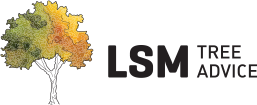Tree Reporting
A LSM Aborist Tree Report report typically contains detailed information about the health and condition of a tree, as well as recommendations for any necessary maintenance or remedial actions. Here are some of the key components that may be included in an arborist tree report:
Tree identification: The report will typically begin with an identification of the tree species and a brief description of the tree's location and surroundings.
Tree health and condition: The arborist will assess the overall health and condition of the tree, including any signs of disease, pests, or structural damage.
Risk assessment: The report may include a risk assessment, which evaluates the likelihood and severity of any potential hazards posed by the tree, such as falling limbs or branches.
Maintenance recommendations: The arborist may recommend various maintenance activities to improve the health and safety of the tree, such as pruning, cabling and bracing, or fertilization.
Remedial actions: If the tree is found to be in poor condition or poses a significant risk to surrounding structures or people, the report may recommend more extensive remedial actions, such as removal or crown reduction.
Legal requirements: The arborist may also include any legal requirements or regulations that apply to the tree, such as local council regulations around tree removal or preservation.
Overall, our tree report is a comprehensive assessment of the tree's health and condition, as well as recommendations for any necessary actions to maintain or improve its safety and longevity. It is an important tool for property owners, developers, and local councils to manage and preserve trees in their communities.
